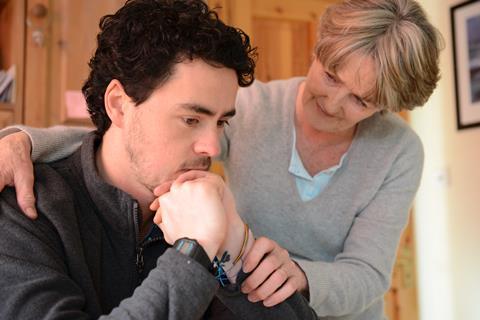By creating a more representative and better trained workforce and providing a greater choice of treatments and treatment contexts, we will increase the chance of engaging men in mental health services, writes Professor Sarah Niblock

When you call a GP surgery to make an appointment, you are often asked what ails you – a reasonable question for busy surgeries needing to prioritise patients by need.
But imagine you’re a man who is in emotional crisis and the receptionist’s voice on the other end of the line or over the counter is female. Might you have some reservations?
Last week I gave evidence to a Parliamentary inquiry into the mental health of men and boys, calling for urgent action to address the “feminine” coding of the health and care sector as a whole. I am worried it’s one of a number of factors that is stopping men from seeking help.
You can’t simply “lump” all men into one single category or assume a one-size-fits-all approach will work
UKCP members tell me that depression, anxiety and other forms of mental distress are felt acutely among men and boys but often you wouldn’t know it – sadly not until they reach absolute crisis point.
It’s a national tragedy that more than three quarters of all completed suicides are among men and boys, yet so few access support.
Male suicide affects all ages and characteristics but we know it affects middle aged men the most, a group who typically under-utilise mental health services. Women and girls are almost twice as likely to be referred for mental health treatment on the NHS as men.
Men’s lack of engagement with mental health services is often simplistically attributed to “traditional” masculine traits such as stubbornness and self-reliance. But there is a great deal more to it.
First, this analysis fails to critique the social structures that normalise and reproduce problematic notions of what it is to be a man.
And, second, it fails to properly scrutinise services themselves, and how they might be made more attractive to those – particularly men – who are not currently engaging with them. You can’t simply “lump” all men into one single category or assume a one-size-fits-all approach will work.
My organisation of some 10,0000 members hold a huge repository of knowledge on what it means to be a man or boy navigating everyday challenges, like work, family, education, crime and loneliness.
First, we need to look at the journey through the lens of a man in distress. What symbols, behaviours and systems will they encounter?
Men come into therapy to share experiences and feelings they have never articulated to anyone, even to their closest loved ones. These vital steps can be taken to ensure a prospective male patient won’t only encounter women at each stage, and feel themselves valued and reflected in the visuals and language associated with the service.
Gender norms
Of course, addressing gender stereotypes goes far beyond the realm of health services, but there’s an opportunity here for us to be much more mindful of the way gender norms affect interaction with services. This is vital because adhering to masculine traits is associated with reduced help-seeking and that men may be less likely to recognise mental health issues in themselves.
There’s much evidence to show that men are far more likely to “act out” than verbalise their emotions, not least because they are all too often taught to bottle up their feelings from childhood
We can learn much from numerous innovative examples of mental health services around the world that have successfully engaged with men such as Man-up Against Suicide (Canada), Beyond Blue (Australia), Menzone (Bradford, UK) and ManTherapy (Colorado).
What these services share is how they are talking to men differently, creating men-only spaces, creating new, atypical therapeutic approaches for men. Importantly, this helps men to feel acknowledged and that their feelings are valid. The number one question our UKCP therapists are asked by men is “Is this normal”?
The NHS and Health Education England must take proactive steps to encourage men (and other underrepresented groups) to work in mental health services and health services more generally. This requires serious will and some investment.
But with the NHS facing a raft of workforce challenges, recruiting more men will have benefits far beyond enhancing men’s interactions with services.
That said, this provides no guarantees of a culturally competent workforce, sensitive to the ways in which gender might affect the presentation of mental health challenges. Cultural competence is essential to ensuring that there is a thriving workforce capable of serving the population as a whole.
Sadly, the evidence suggests that training is inconsistent across the country and that gender is often missing.
There’s a golden opportunity for the government, NHS, HEE and regulatory bodies to take proactive steps to fund and promote a consistent model of cultural competence training across the UK for mental health practitioners, where appropriate, as part of continued professional development.
This training should include a thorough examination of the way prevailing gender norms influence the presentation of mental health difficulties. For example, there’s much evidence to show that men are far more likely to “act out” than verbalise their emotions, not least because they are all too often taught to bottle up their feelings from childhood.
Services like these won’t work for all men, but we do know that giving people choice over their treatment improves outcomes. If we can create a more representative and better trained workforce and provide a greater choice of treatments and treatment contexts, we will increase the chance of engaging men in mental health services.
That stands to benefit us all.





























No comments yet